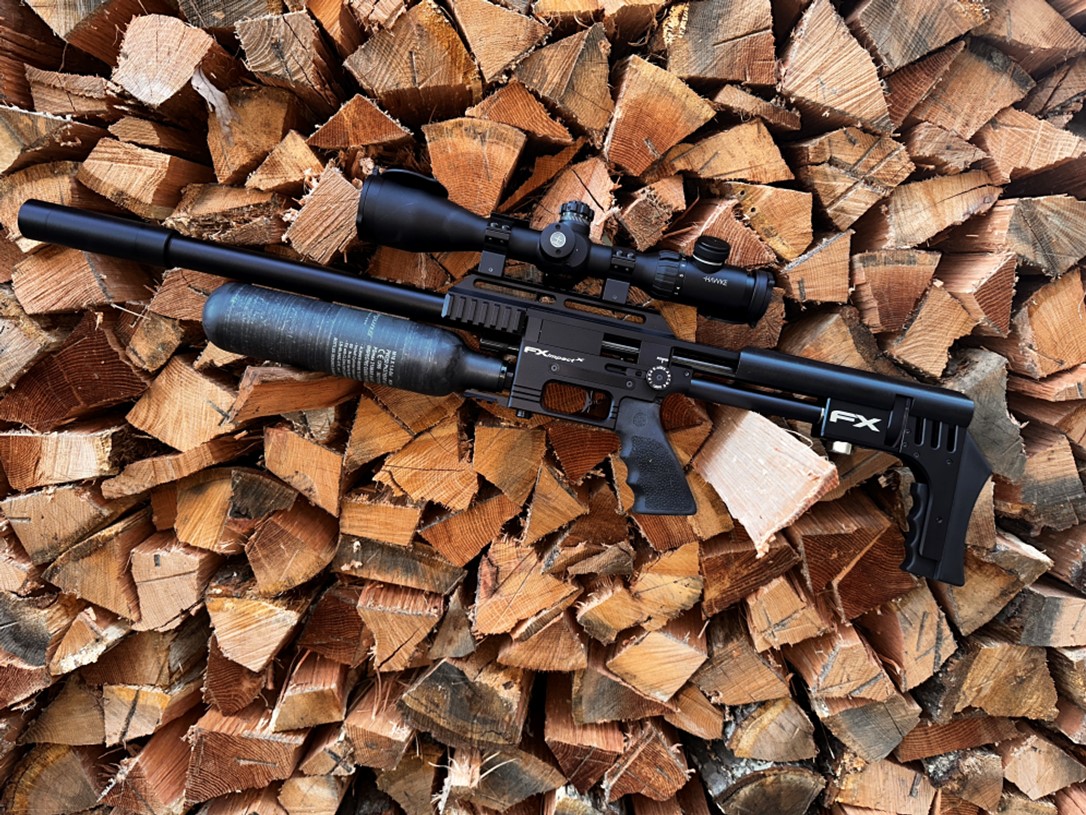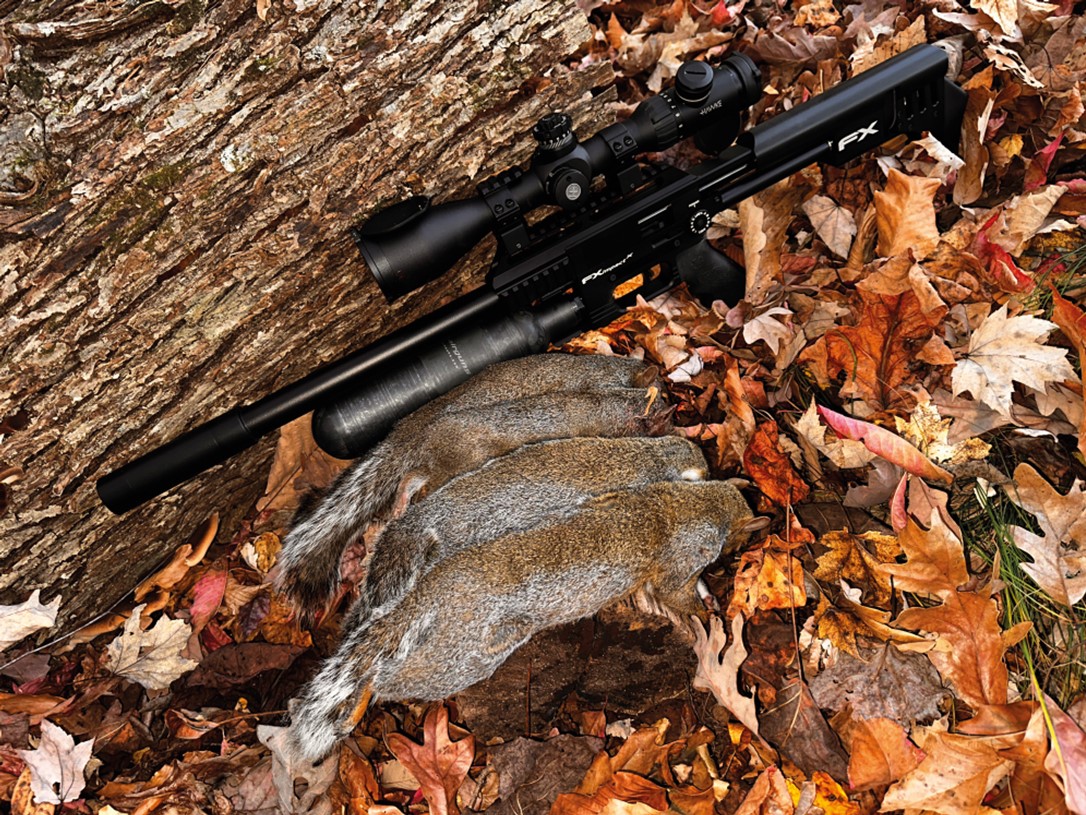It’s been quite a while since I visited my brother, Richard, and his wife, Michelle, in the USA – way too long, to be honest. It wasn’t as simple as just booking a flight and off I’d go – oh no! I was keen to get out to do a spot of hunting, and my target species was the grey squirrel. I’d be treating it as ‘pay back time’ for their part in endangering our native red squirrels, although this was actually down to the Victorians back in 1800s.
Believe it or not, there is a squirrel season in Virginia USA that runs from the beginning of September through until the end of February, plus another spring season from the 1st of June until the 15th. You might find this strange given the quantity of squirrels available in the USA, but there’s a reason for these seasons – the number of hunters! It’s a part of their life over there, so any hunted species would soon be on the endangered list if the seasons weren’t in place. That’s not all – there is a bag limit of six a day, and this includes ‘gray’ as they are referred to over the pond, red, and fox squirrels, but the limit is for a total of six –not six of each. Richard and Michelle had been experiencing problems with the grey squirrels on their property where they had been decimating the bird feeders and chasing the songbirds away – so that was my task for a couple of days.

SPOT THE DIFFERENCE
The North American red squirrel should not be confused with the European red squirrel. The European variety is generally all red with a white belly, whereas their American cousin is more of a grey colouration with red tinges, no ear tufts, a black halo to the tail, and with a distinct white ring to the eye. It is sometimes referred to as a ‘piney’ squirrel, and even ‘chickaree boomer’ – how weird is that, eh? The ones I have seen have been slightly larger than our reds and were definitely grey, but certainly distinguishable from the ‘gray’ I’m not sure how I’d feel having one in the crosshairs, but thankfully, I haven’t had to deal with that situation.
The fox squirrel is the largest of the three American tree rats, and is also known the ‘Eastern fox’ or ‘Bryant’s fox squirrel’. It appears to be a mixture of both the red and gray, having a grey body and a red tail, but its size is the give-away sign, unless it’s a youngster.

CHECK IT OUT
Armed with all this info, I was ready for the trip. We flew from Leeds Bradford to Dublin – taking liquid refreshment in the shape of an early morning Guinness (it’d be rude not to) – then flew into Washington DC to be picked up by Richard, aka Baby G, followed by a four-hour drive to Smith Mountain Lake in Virginia. It had been a long day, but I wasn’t sleepy at all. I needed to check out the land because the property covers quite a few acres, with a huge number of beech and hickory trees. The land itself runs all the way down to the lake, and a dock area where the boat is stored, so this was where I would be able to check the zero of the airgun.
The dock is constructed from composite decking, which provided a perfectly flat area to allow a prone position for zeroing across the bay to the far bank, 60 yards away, which was still part of Richard and Michelle’s property. We’d also be doing some fishing from here for the local carp and catfish, and if it sounds like an idyllic place to spend a holiday, let me assure you it is.
Last time I was here, the house had just been finished, and there was some landscaping to complete, but the trees had been thinned out and it was now easy to see through the woodland. I had missed the spectacular autumn colours, and the ground was now covered in a carpet of dry, crispy leaves. Fall had come early compared to the UK, and the trees were near enough bare. I’d given the land a once-over, and already seen a handful of grey squirrels, so it was time to hit the sack and formulate a plan before drifting off to sleep.

PREP TIME
The next morning arrived early. I didn’t sleep much due to jet lag, but it was okay because I had things to do. Firstly, we called in at the local farm supply outlet. Knowing how well monkey nuts worked back home, and how the grays were taking them from the bird feeder here, it was an easy decision to carry on with the same feed; $17 for a small bagful seemed a bit steep, but it was more than enough for a few days of pest control, and the songbirds would appreciate them, too.
Next up was to check the zero and get used to my brother’s airgun. A few years back, I sorted out an FX Impact X for Richard, in .25 calibre. Obviously, it was FAC because there is no su-12 requirement/law in the US. I often wonder how many UK airgunners would use sub-12 if the law was either changed or didn’t exist in the first place. I often hear comments like ‘FAC is cheating’, but if we weren’t told we had to use su-12 unless we had an FAC, how many would? Just a thought.
Anyway, I got myself set up on the dock whilst the others fished. The FX hadn’t been out for a while, but you wouldn’t have known it. I picked a mark on the undercut of a far bank and it was stacking the 25gr Air Arms Diablos with ease at 60 yards. The rifle was totally standard – no Donny FL silencer, or Sabre Tactical underslung Picatinny rail for a bipod. In fact, my rest was a small Plano tackle box – I’ve promised Richard I’ll look into sorting something out for him – but considering the poor support, the grouping was outstanding.

HOW MUCH!
There was only one thing left to sort out now, and that was to apply for a hunting licence – and that’s where it all fell apart. A non-residential licence was $111, and a three-day licence was $60, but it had to be for three consecutive days. The Yorkshireman was coming out in me, and as we wouldn’t be hunting for three days in a row, and I didn’t want to pay out $111, we made the executive decision that I would act as guide and mentor for my younger brother because he had a lifetime licence. I was not happy, but at least I’d be involved as a spotter, and using my UK-gained skills to get on to the skinnies.
The bird feeders had been topped up the night before, and at first light, I was back among the beeches checking what had been taken. It was pleasing to see that nearly all had been ‘shelled’ and further exploration of the woodland revealed a few grays on the ground, up in the trees, and doing exactly what they do here – chasing one another up and down, then around the tree trunks. This was bliss! The day was shaping up to be a good one.

THE GAME BEGINS
At the top end of the property is a barn with a covered wood store, and the logs were piled to a perfect height from which to support the FX and create excellent cover. The bird feeders were between 45 and 55 yards away and there was a good amount of spilled feed under the feeders; there were also a few big fallen branches, which squirrels love to sit out on, especially when feeding. The plan was set and the waiting began. Richard was on point and my job was spotting, although I was using binoculars instead of thermal, but that worked out well under the limitations.
It only took around 15 minutes before we had our first guest – an adult female came bouncing across the crispy leaf carpet and we actually heard it before we saw it, which wouldn’t have been the case if thermal-imaging had been deployed. It settled central of the spilled feed and a nicely placed headshot dropped it on the spot. I was quite impressed because Baby G doesn’t get to use the rifle as much as he used to.
With all the leaves gone from the trees, it was easy to spot movement, and at one stage, I lost count of how many were ratching around in the distance, but with a bag limit of six, there was no point in taking shots way out into the wood and risk scaring them off before they even got near us.
I picked up a pair sitting up in the beeches around 45 yards out, in separate trees but up high, enough to require some hold under. I explained what was needed – one mil dot under when the upward angle is over 30 degrees is my rule of thumb – and my shooter was rewarded by seeing both fall to the ground with a thud, from successive shots. The Impact is pretty quiet in standard form, and I could still see the grays foraging out in front of us. A couple were obscured by fallen branches and leaves, but they’d become visible eventually.

HOLD ON
A chattering to our left alerted us to an agitated gray. At 50 yards, it was sitting on one of the large fallen branches and looking directly at the two recently dropped grays. Its tail was twirling madly in annoyance. Shifting positions in the log store to get Richard into place took a minute or two, because keeping noise and movement to a minimum was necessary to prevent alerting the squirrel to what was coming.
Once in place and just when he was about to take the shot I whispered, “Hold on.” The wide field of view through the bino’s picked up another skinny heading toward the agitated one; the Hawke Airmax scope didn’t pick up the incoming gray, but the wider angle of the bino’s did. Surely, it wasn’t going to join its compatriot! It did, although five yards apart.
“Take the nearest one,” was my instruction because it was behind the newcomer, and if it fell it wouldn’t be seen by the late arrival ... “but cycle the mag quickly and get on the next one.”
Richard followed my instructions perfectly, and both grays were ‘schwacked’ before they knew what was happening. I was feeling pretty smug at this stage, and I hadn’t even taken a shot.
We brought our tally to six with another gray taking monkey nuts from the bird feeder, and that was the day over. Six taken in under two hours and still plenty showing out in the woods. They obviously weren’t fazed too much by human activity, and I have since spoken to Baby G, and he told me that there are still plenty running around, along with rabbits that have turned up from nowhere.
We were back out again a few days later, and took another six out – again in a few hours. It was like shooting fish in a barrel. Next time, I will definitely invest in a small-game licence, though, and get in on the action. Sod the expense!